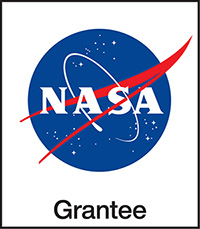Engaging Family and Community
Here are a few suggestions for connecting with families and community members:
- Download, print, and send the Family Fliers home with your learners.
- Invite a guest speaker to share community and/or cultural knowledge on the unit topic.
- Use this question as a starting point for the guest speaker: “Can you tell a story about why water is important to you and your community?” Invite a guest speaker to share community and/or cultural knowledge on the unit topic.
- Have beginning, middle, and end meetings with families while doing the unit.
- At the first meeting, discuss with families what they would like to share and what they would like to learn. Set some ground rules for how to interact with each other.
- At the mid-unit meeting, have families choose from the list of questions on the family fliers and pick one or two to share stories about.
- At the Share-Out, make time for learners to share their creations and encourage families to go deeper and share any more details, stories, or concepts that the learning progress sparks for them.
Translatable Glossaries
In order to scaffold learners’ language development during these activities, please use these editable files as needed to support students’ language captured on the Our Ideas poster and in their student notebook.
To support their language development, you can include translations and/or images that your learners will relate to. If you are fluent in your learner’s languages, you can write the translations yourself. If you are not, consider asking a family or community member to help you. There also may be online dictionaries for your learner’s languages like these for American Sign Language: https://atomichands.com/asl-stem-dictionaries/ or https://enablenavajo.org/dine/ for Navajo.
Remember that vocabulary is not intended to be “front-loaded” for learners, but rather it develops as they engage in the activities. To support this development, be sure to leave room for learners to add their own drawings and notes under the words to help them articulate and remember their meanings.”
Science Questions
Send learners home with questions for their families and have them bring answers back to the program. Suggested questions are listed below.
Use these questions for each activity. If you have extra time, you can start each activity with a discussion of what they learned at home and end each activity with a reminder of the next activity’s question.
Can you tell a story about…
…water? (Science Activity 1)
…finding or getting to water? (Science Activity 2)
…something that lives in water? (Science Activity 3)
…planets or moons? (Science Activity 4)
…traveling to explore other worlds? (Science Activity 5)
…looking for living things? (Science Activity 6)
Engineering Questions
Use these questions for each activity. If you have extra time, you can start each activity with a discussion of what they learned at home and end each activity with a reminder of the next activity’s question.
Can you tell a story about…
…water? (Engineering Activity 1)
…contaminated water? (Engineering Activity 2)
…observing water? (Engineering Activity 3)
…filters, for water or for something else? (Engineering Activity 4)
…using a process? (Engineering Activity 5)
…designing something? (Engineering Activity 6)
…improving? (Engineering Activity 7)
…sharing your ideas? (Engineering Activity 8)

